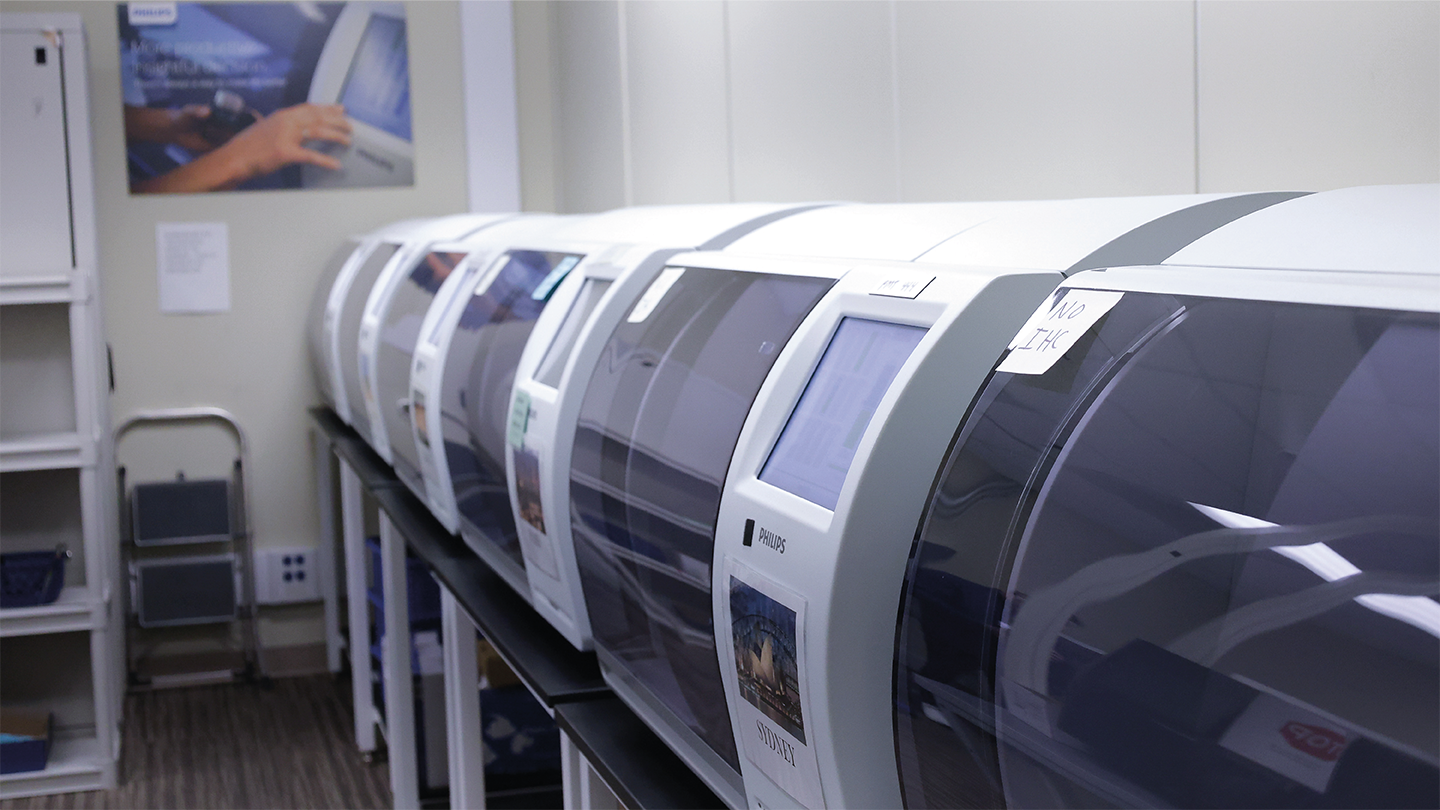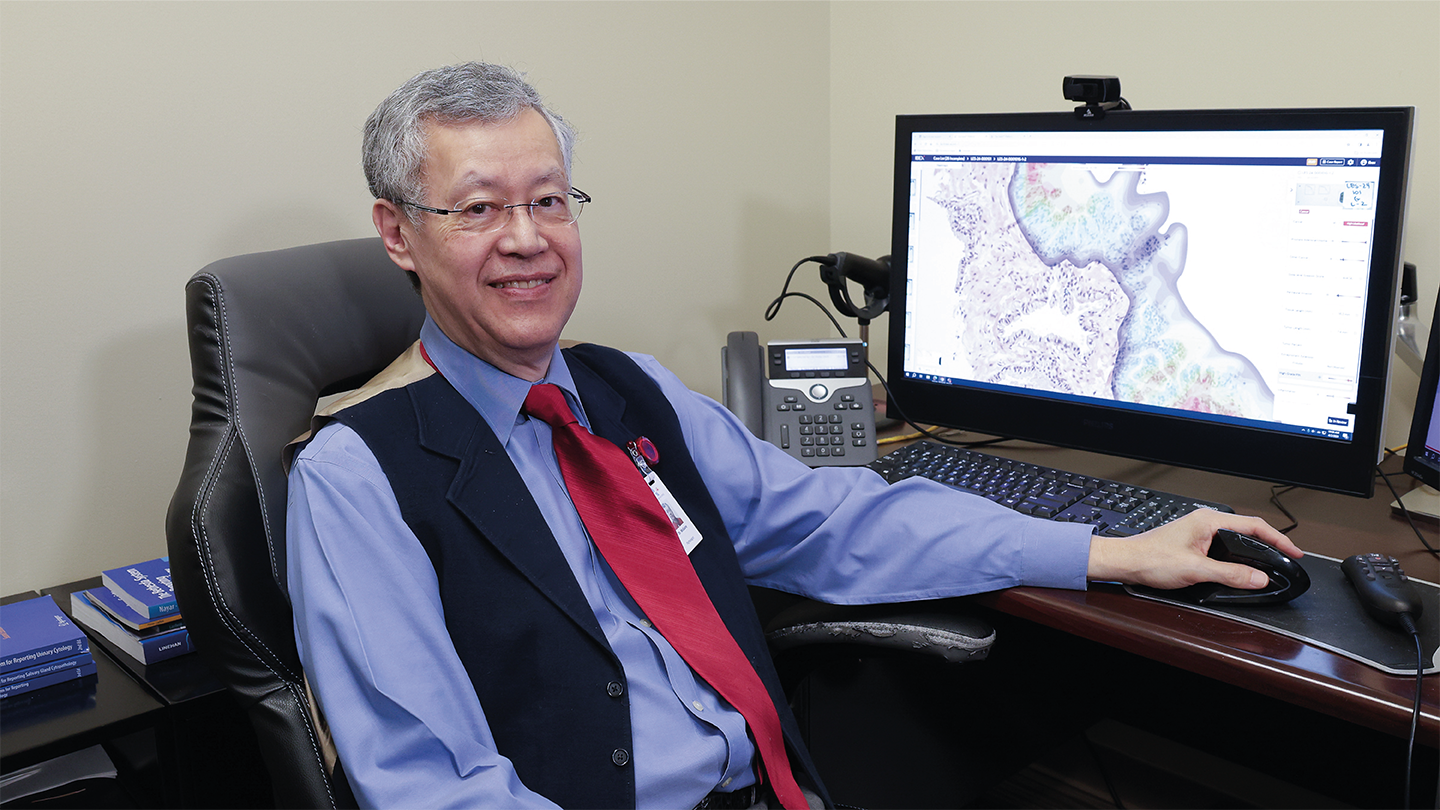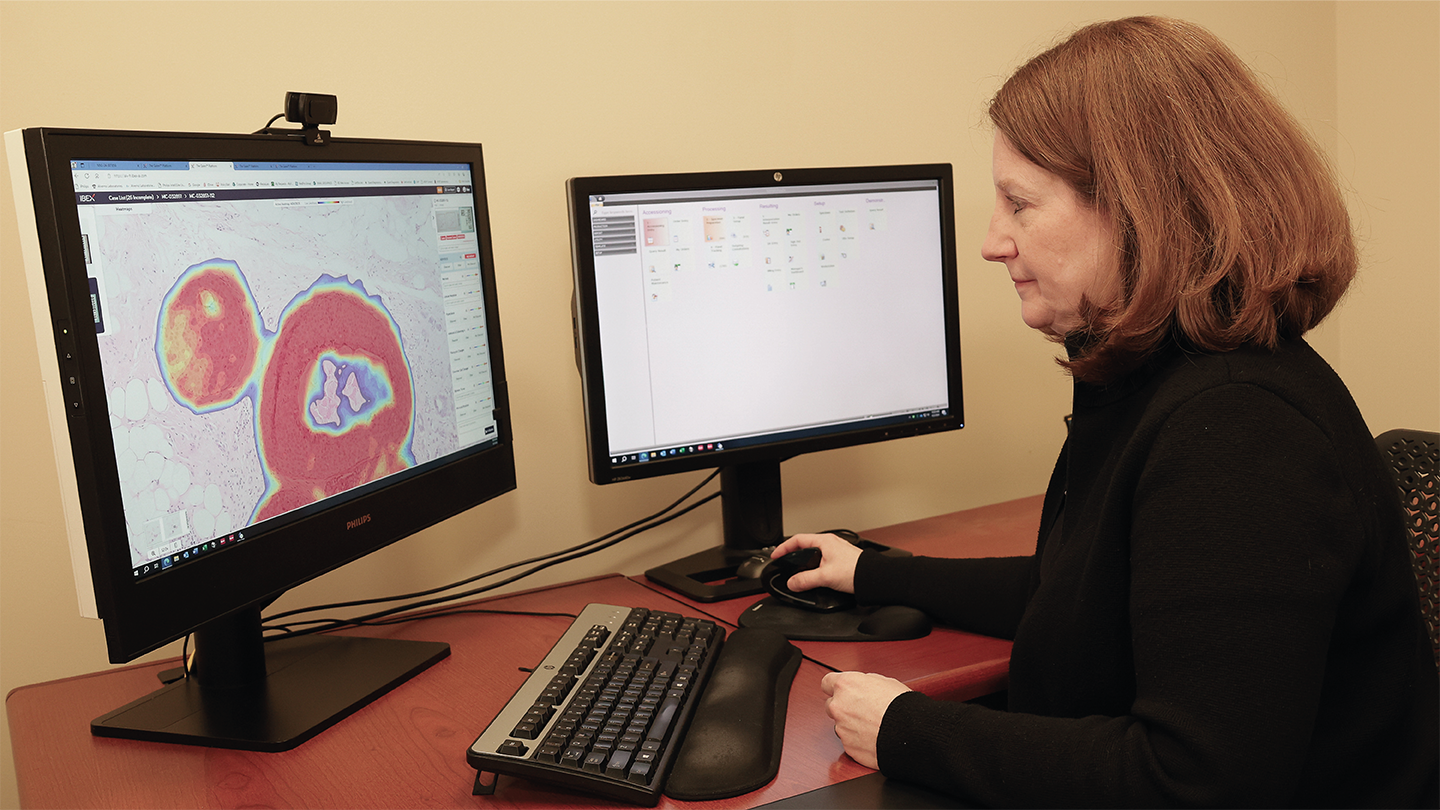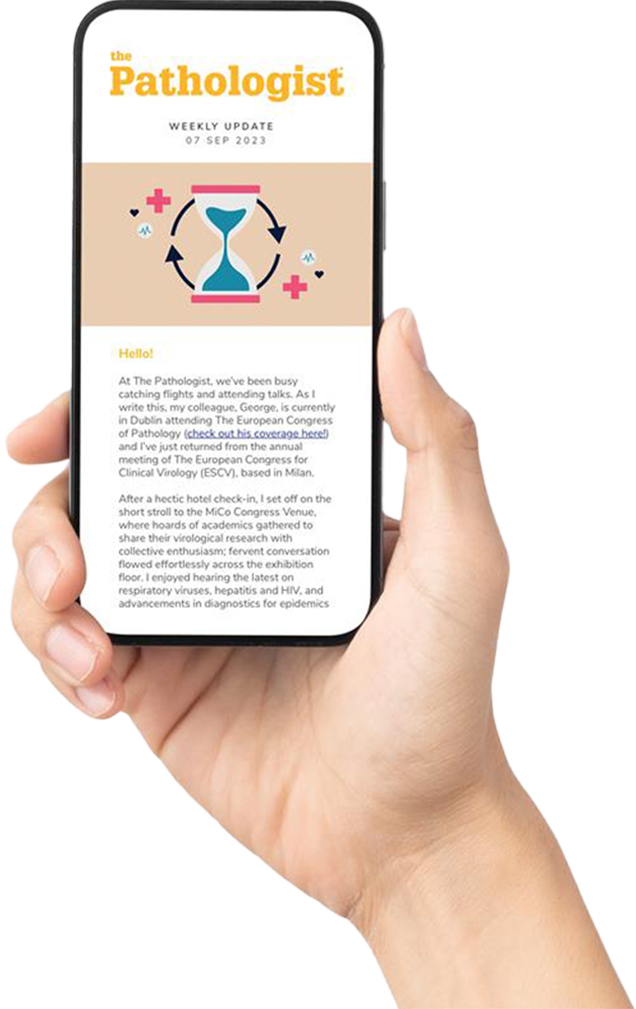In the states of Illinois and Indiana, a network of private laboratories, headed up by Sam Terese, is way ahead of the curve.
Having made the decision to fully digitize its histopathology workflow back in 2017, Alverno Laboratories is a true pioneer of computational pathology, Stateside.
The Pathologist sat down with Terese to find out why – and how – Alverno took the digital pathology plunge.
Meet Sam Terese

I've been in the laboratory field for a little over 45 years. Believe it or not, I started out as a phlebotomist, but I haven’t done that in about 44 years! Over time, I moved through various management roles in different settings.
My entire career has been dedicated to diagnostic laboratory medicine, except for about a decade in pure research. I even developed some expertise in mouse viruses, though I’m not sure that’s particularly valuable anymore! But yes, I’ve been deeply involved in the lab field for a long time.
Since then, I’ve worked in hospital laboratories in different leadership roles, and today, I serve as the CEO and President of Alverno Laboratories. We operate a large, integrated laboratory network, servicing over 30 hospitals, 34 patient service centers, multiple free-standing emergency departments, and numerous physician practices.
When did digital technologies pop up on your radar?
Interestingly, my first real encounter with digital technology was during my research days at a university. We had the technology to work with digital systems, but the computing capabilities weren’t quite there yet. It’s been an evolving concept in the background for a long time.
Back then, the idea of handling large amounts of image data was a challenge – we were still working with floppy disks! We were thrilled when we got a 10-megabyte storage device, which felt like a huge leap forward at the time. Now, a single image might be a gigabyte or more of data.
It’s been fascinating to watch the evolution of digital imaging. It took years to develop a truly usable digital pathology image, and, in 2017, we decided it was time to digitize to solve a major problem.
With multiple hospitals and locations, we were physically transporting glass slides across hundreds of miles, every night or first thing in the morning, to get them to a pathologist. Digital pathology solved that problem instantaneously.

What other factors motivated the decision to digitize your labs?
Beyond logistics, you have to think about the impact on patients and providers. When a patient is waiting for a diagnosis – especially for something like cancer – even if they’re told it’s routine, they’re still anxious. If we can take even a day out of that waiting time, it’s a significant benefit.
Digitization also improves efficiency, making it easier for pathologists to work in different environments, within regulatory guidelines. During the pandemic, for example, we had to ensure that pathologists could access images whether they were in the hospital, at home, or elsewhere. Digital pathology became not just a matter of efficiency but also a safety issue.
It’s true that determining the return on investment for digital pathology can be challenging, but I see it as a foundation, not an endpoint. It opens the door to AI and advanced analytics. If you think short term, it may seem hard to justify, but in the long term, it’s essential.
Consider how it took decades to establish digital pathology, yet within just four or five years, we’ve seen the rapid emergence of AI applications. Things are moving faster than ever – just look at what we’re doing now with AI-driven diagnostics in prostate, breast, and gastrointestinal pathology. I don’t think we’re anywhere near the limits of what AI can achieve.

Do you think the potential of AI-driven diagnostic tools will be a driver for other labs to digitize?
Absolutely. AI solutions are the next step in diagnostics. If you look at laboratory testing over the past 30 years, each test has improved in reliability and quality. So why wouldn’t we do the same for pathology? We should always be striving to enhance diagnostics with the best tools available.
I’m not sure if AI-driven digital pathology will become the standard of care just yet, but it’s a possibility. That’s why finding partners who are ahead of the curve is crucial. When we went digital in 2017, we had only one viable option. We processed 5,000 to 6,000 slides a night, and there was only one vendor who could operate at our scale.
Today, the market has expanded, and digital pathology is becoming more common. But we also have to think ahead. Our colleagues in Europe are already facing severe pathologist shortages, with delays stretching across multiple days. The US isn’t quite at that stage yet, but I suspect we will be soon. And that’s another good reason to stay ahead of the curve. AI solutions can supplement pathologists’ work, making them more efficient by prioritizing cases. For example, AI can flag likely cancer cases, allowing pathologists to focus on the critical samples first.
How did you approach the digitization project?
The first big question was whether this would even be accepted by the pathologists. Across the Alverno system, we had around 100 pathologists from different groups, and their buy-in was crucial.
The FDA approved the first scanner for primary reads around 2017. At the time, it was the only option available at scale. We knew we couldn’t move forward until we had FDA-approved technology. So, the moment we got the email announcing the approval, we decided to move ahead because it directly solved our turnaround time and logistics challenges.
At the time, we had to travel overseas to see digital pathology in action, as there was no one in the US using it back then. We formed a team of pathologists and administrators to evaluate the market. We brought in four different scanners and tested them by scanning sample slides, which we sent to pathologists across our system for review. From there, we narrowed it down and sent pathologists abroad to see the technology in action. That step was key to getting buy-in because they became invested in the process.
The next hurdle was integrating it into the workflow. Scanning slides adds an extra step compared to simply packaging them for transport, so we had to figure out how to ensure everything was still ready by 8 am the next morning. This meant investing in 10 to 12 scanners to maintain efficiency and turnaround time.
Interestingly, while scanning added a step, it also eliminated time-consuming manual processes, such as sorting slides. Special stains could now be scanned immediately rather than waiting for the next day. Overall, the workflow impact was neutral, if not slightly improved.
Then, of course, the pandemic hit. It disrupted the validation work that we needed for full rollout, but once we got through it, we came back strong. Today, our entire system is fully digital and has been for several years.
What were the barriers to implementation – and how did you overcome them?
Most of the challenges were operational issues related to training and mapping out the workflow. Another major hurdle was figuring out how to move large image files through the various IT infrastructures of different organizations while maintaining security and efficiency.
We had to work through these protocols early on. In the end, it wasn’t as difficult as we initially feared, but it required careful planning. Each organization had its own security protocols, infrastructure, and bandwidth considerations, so we spent a lot of time understanding these factors before even bringing in the scanners. We had to determine where servers would be located, how data would be transferred, and how to ensure images were routed to the correct sites securely. Labeling, barcoding, and access controls were key components of this process.
Cost is always a factor, of course. For us, as a multi-site system, it was easier to justify because the logistical efficiencies were clear. But for a single hospital where the histology lab is just across the hall from the pathologist, the return on investment is harder to quantify. Put another way, in smaller networks covering a limited geography, the financial challenges are more significant.
That said, the landscape is changing. More and more early-career pathologists are being trained in digital pathology, so it’s becoming the norm. If you told a teenager today that they had to give up their smartphone, they’d struggle – that’s the same mindset shift happening in pathology. Young pathologists are more likely to choose digital labs for their careers, making it a potential recruitment advantage.
How did the lab teams take to the new way of working?
Here, I can share a story that is very telling. One of our sites was subject to a cyber-attack, which meant that we had to sever all connections and stop sending digital images through to them. The team there had to revert back to glass slides and microscopes – but the pathologists refused to work in that way. They said, “Don’t send me glass; send me to a different site where I can read my digital cases on their network!”
For the histology staff, the digital workflow means they don’t have to sort through thousands of slides every night and try to make sure the drivers deliver them to the correct sites.
The digital workflow very quickly became the new normal – with a lot less hassle.
When and why did you decide to introduce AI tools to the lab?
We started the conversation about two or three years ago, exploring different providers. Ibex Medical Analytics seemed to have the most developed solution at the time.
For us, it was simply the right thing to do. Just like we strive to improve lab tests over time, we should take advantage of every technology that enhances outcomes and quality of care. AI is just another step in that continuous improvement – much like how apps have made our personal lives easier, AI can do the same in pathology.
Introducing AI to pathologists is different from digitization because there’s often a fear that AI will replace them. But that was never the intent. AI is a tool to support them, improving diagnostic accuracy and reducing even the smallest margin of human error. Pathologists themselves acknowledge that, as humans, errors are always possible.
AI is not meant to replace pathologists but to support them by reducing errors and mitigating risk. It has been well accepted among our pathologists because they see its value. After all, AI is trained by pathologists, not independent of them.

What steps did you take to implement AI into the workflow?
Once we had digital images, we needed to ensure they could be securely sent to Ibex Medical Analytics and returned to the pathologists. It was an added layer, but we managed to streamline it effectively.
We now apply AI to all prostate, breast, and gastrointestinal cases. Prostate is fully implemented across our sites, breast is nearly complete, and GI is currently rolling out. We anticipate full implementation by mid-year, rolling out site by site with appropriate training.
What difference have these tools made to both the lab and patients?
Measuring impact is challenging, but we can confidently say that we are providing a higher level of accuracy to patients and physicians. This isn’t just about having cutting-edge technology – it’s about improving patient outcomes.
Studies show that some cancer cases – perhaps 5 percent – are missed or underdiagnosed. Even if we only improve that rate by 1 percent, that’s still meaningful. If 2 out of 100 patients experience a delayed or missed diagnosis, that delay can have significant consequences, especially in cancer. Early detection is key, and AI helps achieve that.
We still have much to learn about cancer, but if AI helps us detect it earlier and manage it more effectively, then every lab should be using it.
What advice would you give to other laboratory leaders seeking to deploy computational pathology?
If I were an administrator looking at purely digital proposals, I would tell you that, economically, the gains are questionable. However, if you came to me and said, “I can improve these patient outcomes with AI,” that would make the case for me. Patient benefits tie into the mission and values of an organization, as well as its finances.
The challenge is that the pathology reimbursement models are not evolving at the same pace as AI diagnostic innovation, but I think they will catch up over time.




